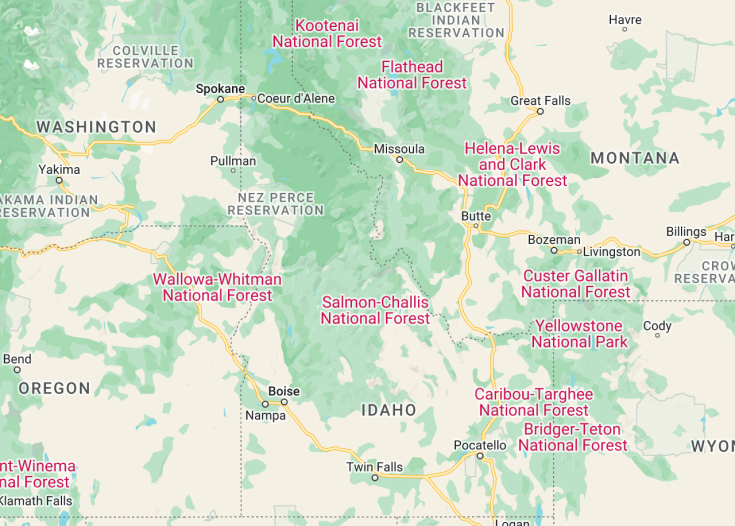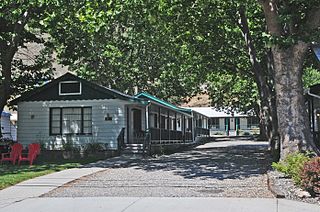Idaho, often referred to as the “Gem State,” stands as a testament to nature’s splendor. Nestled in the Pacific Northwest, this state boasts a diverse landscape ranging from dense forests and shimmering lakes to sprawling plains and bustling urban centers. Whether you’re an outdoor enthusiast seeking adventure in its vast wilderness or a cultural aficionado searching for artistic inspiration in its cities, Idaho promises a unique and unforgettable experience.
Visit during late spring to enjoy wildflower blooms in Sun Valley or to participate in Coeur d’Alene’s annual Ironman competition.
In Boise, allocate a day to explore the Boise Art Museum and savor local dishes at the bustling downtown eateries.
Idaho (USA): The Gem State.
| Capital | Boise |
| Time in Idaho (USA) | GMT-6 |
| Language spoken | English |
| Population | 1.8 million (2020 Census) |
| Religion | Christianity (59%) Others (41%) |
| Currency | United States Dollar (USD) |
| Airports | Boise Airport Friedman Memorial Airport Pullman-Moscow Regional Airport |
Idaho: The Gem State, is an enchanting destination in the United States. Known for its stunning natural beauty and abundant natural resources, Idaho offers a unique and diverse experience for travelers.
Where is Idaho located?
Idaho is located in the northwestern region of the United States. It shares borders with six other states: Montana to the northeast, Wyoming to the east, Utah to the south, Nevada and Oregon to the west, and Washington to the northwest.
What is Idaho famous for?
Idaho is famous for its picturesque landscapes, including the majestic Rocky Mountains, crystal-clear lakes, and vast forests. The state is also renowned for its agriculture, particularly for its production of potatoes, which has earned Idaho the nickname “The Potato State.” Outdoor enthusiasts flock to Idaho for its world-class opportunities for hiking, fishing, skiing, and whitewater rafting.
History
(1805 – 1863) Early Exploration and Settlement
The earliest recorded European exploration of present-day Idaho began with the Lewis and Clark Expedition in 1805. Meriwether Lewis and William Clark, commissioned by President Thomas Jefferson, ventured through Idaho’s rugged terrains in search of a passage to the Pacific Ocean. Over the next few decades, fur trappers and traders, attracted by the region’s abundant wildlife, established trading posts, most notably Fort Hall in 1834.
While early explorers initially found Idaho’s landscapes inhospitable for farming, the discovery of gold near present-day Pierce in 1860 attracted a flood of settlers and prospectors to the region, marking the beginning of a significant population increase.
(1863 – 1890) Statehood and Development
In 1863, the Idaho Territory was officially established by the United States Congress, separated from the Washington Territory. Lewiston was the first capital, but in 1865, the honor was shifted to Boise due to its central location and burgeoning population.
The latter half of the 19th century saw the construction of the Oregon Short Line Railroad, significantly boosting the state’s commerce and population. The push for statehood gained momentum, and on July 3, 1890, Idaho was admitted as the 43rd state in the Union.
(1890 – 1950) Economic Growth and Transformation
Following statehood, Idaho witnessed a period of significant economic transformation. Agriculture, particularly the cultivation of potatoes, emerged as a dominant sector, earning the state its nickname as the “Potato State”. Moreover, the state’s rich mineral resources led to a mining boom, with silver, lead, and zinc mines flourishing, particularly in the Coeur d’Alene region.
The early 20th century brought with it infrastructural development. Dams were constructed to harness the state’s vast water resources, and roads were expanded, connecting even the remotest of regions. The Great Depression of the 1930s did impact Idaho, but federal initiatives and local resilience ensured a steady recovery.
(1950 – 2000) Modernization and Urban Growth
Post World War II, Idaho underwent a period of rapid modernization and urbanization. With the establishment of institutions like the Idaho National Laboratory in 1949, the state began to make its mark in the fields of nuclear energy and technological innovation. Cities like Boise, Idaho Falls, and Coeur d’Alene saw an influx of residents, leading to urban expansion and the development of modern amenities and infrastructure.
The latter part of the 20th century was characterized by a surge in the state’s tourism sector. Idaho’s natural beauty, encompassing national parks, forests, and recreational areas, attracted tourists from across the nation and the globe.
(2000 – Present) Contemporary Idaho
Entering the 21st century, Idaho continued to experience growth, both in terms of population and economy. The tech industry began to flourish with Boise, in particular, emerging as a hub for startups and innovation. The state’s commitment to sustainable practices and conservation has been evident, with initiatives to preserve its natural landscapes and promote green technologies. Today, Idaho remains a blend of its rich historical roots and forward-looking aspirations, drawing residents and visitors alike with its promise of opportunity, adventure, and breathtaking natural beauty.
Visit Idaho (USA)
What to see and do in Idaho (USA)
Idaho offers a variety of attractions and activities for visitors to enjoy. Here are some highlights:
- Explore the stunning landscapes of Idaho’s national parks, including Yellowstone National Park, Sawtooth National Recreation Area, and Craters of the Moon National Monument.
- Go hiking, camping, and fishing in the vast wilderness areas and scenic mountains.
- Visit Boise, the capital city, and discover its vibrant downtown area, art galleries, museums, and beautiful parks.
- Experience the thrill of whitewater rafting or kayaking on the Salmon River or Snake River.
- Learn about Native American culture and history at the Nez Perce National Historical Park.
- Take a scenic drive along the historic Oregon Trail and learn about the pioneers who traveled through the region.
Upcoming events in Idaho (USA)
Idaho hosts a variety of events year-round. Here are some notable ones:
– The Sun Valley Film Festival takes place in March, showcasing independent films and attracting filmmakers and enthusiasts from around the world.
– The Snake River Stampede, held in July, is one of the top rodeo events in the country, featuring bull riding, barrel racing, and other rodeo competitions.
– The Western Idaho Fair, held in August, offers a variety of entertainment, including live music, carnival rides, agricultural exhibits, and food vendors.
– The Trailing of the Sheep Festival, held in October, celebrates the rich heritage of sheep ranching in the region with sheepdog trials, wool workshops, and culinary events.
These events provide a unique opportunity to experience Idaho’s culture and community spirit.
Best time to visit Idaho (USA)
The best time to visit Idaho is during the summer months of June to August when the weather is warm and outdoor activities are in full swing. This is an ideal time for hiking, camping, and exploring the beautiful national parks.
Spring (April to May) and fall (September to October) offer pleasant temperatures and fewer crowds, making it a great time to visit if you prefer a quieter experience.
Winter (November to March) brings cold temperatures and snowfall to many parts of Idaho, which is perfect for winter sports enthusiasts. Skiing, snowboarding, and snowshoeing are popular activities during this time.
Overall, Idaho’s diverse climate and landscape offer something for every season, making it a year-round destination.
Is Idaho (USA) worth visiting?
Idaho is definitely worth visiting for those seeking outdoor adventures and breathtaking natural beauty. The state’s national parks, mountains, and rivers provide endless opportunities for hiking, camping, fishing, and other outdoor activities.
The cultural attractions and events in Idaho, such as the Sun Valley Film Festival and Trailing of the Sheep Festival, offer a chance to immerse yourself in the local culture and community.
However, it’s important to note that Idaho may not be the best destination for those looking for a bustling city experience or a vibrant nightlife scene. The state is known for its more laid-back and rural atmosphere.
Overall, Idaho’s stunning landscapes, rich history, and outdoor recreational opportunities make it a worthwhile destination for nature lovers and those seeking a peaceful retreat.














